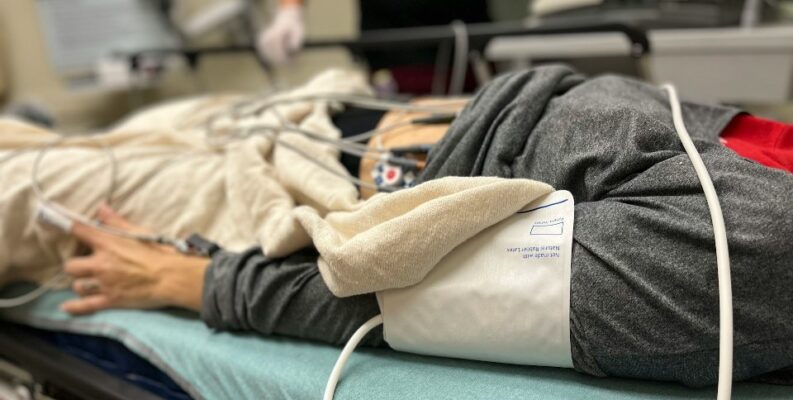
Experiencing trauma is an unfortunate reality for a large portion of the global population. According to the WHO, approximately 70% of people worldwide will face a potentially traumatic event at some point in their lives. While only a minority, 5.6%, will go on to develop Post-Traumatic Stress Disorder (PTSD), the condition affects an estimated 3.9% of the world’s population.
The likelihood of developing PTSD is not uniform, but varies significantly depending on the nature of the traumatic event. For instance, the rates of PTSD are more than three times higher among individuals exposed to violent conflict or war (15.3%), and rates are also particularly high following sexual violence.
Given these statistics, it is clear that trauma and its effects are widespread. Fortunately, there is a range of therapeutic techniques available today that provide effective pathways to healing.
This article will explore various therapeutic approaches that help individuals process trauma, regain control, and find a path toward recovery and well-being.
Understanding Trauma and Its Effects
Trauma is the emotional and physical reaction to profoundly distressing events that disrupt a person’s sense of safety and stability. As HelpGuide.org notes, it leaves individuals feeling overwhelmed, isolated, and powerless, often resulting in persistent anxiety, emotional numbness, and a loss of trust.
The core of trauma lies in this overwhelming experience. It’s not the event itself, but your subjective emotional experience of feeling helpless.
Unprocessed trauma can activate the body’s “fight or flight” response, often causing symptoms such as hypervigilance and muscle tension. Over time, these reactions may evolve into long-term issues, including chronic stress, fatigue, or even PTSD.
Therapeutic Techniques for Recovery
Because trauma affects the mind and body, effective recovery often involves combining multiple therapeutic approaches. While each method works differently, together they help survivors reframe experiences, release stored tension, and regain stability.
Cognitive Behavioral Therapy (CBT)
CBT is a highly effective therapy for trauma-related conditions, working to reshape and reframe harmful thought patterns. Survivors often carry guilt or blame after traumatic events, which CBT challenges by encouraging healthier perspectives. According to Mayo Clinic, CBT involves working with a licensed therapist in a structured way. For some, CBT alone is sufficient, while others may combine it with additional therapies or medication.
Mindfulness and Meditation
Trauma keeps individuals stuck in the past, with intrusive memories and worries disrupting the present. Mindfulness techniques counteract this by anchoring awareness in the present moment. Guided meditation, deep breathing, and body scans teach survivors how to calm the nervous system and regulate stress responses. Over time, mindfulness supports improved concentration, emotional control, and inner peace.
Somatic Therapy
Trauma doesn’t just reside in the mind; it also lives in the body. Somatic therapy recognizes that patterns of tension, restlessness, or numbness often come from physically stored trauma. Through breathwork, gentle movement, and body awareness exercises, survivors learn to release these patterns. Somatic approaches help individuals reconnect with their bodies in safe, empowering ways.
Creative Therapies
Art, music, and sound therapy encourage healing without relying solely on verbal communication. For many, putting trauma into words feels overwhelming. Creative expression allows emotions to surface in symbolic, non-verbal ways. Painting, writing, drumming, or even participating in sound baths can help externalize pain and bring relief. These therapies promote self-expression, empowerment, and deeper healing.
Coping with Sudden Trauma
Sudden and unexpected events, such as natural disasters, violent incidents, or abrupt personal losses, can leave deep emotional scars. A recent example occurred in northeast Atlanta. According to Fox 5, three people were injured after a car crashed into an apartment building on Morosgo Drive NE.
Incidents like these highlight how trauma can arise not only from physical harm but also from the overwhelming fear and shock survivors endure. Left untreated, such experiences may lead to ongoing anxiety, flashbacks, and difficulty resuming daily activities.
Therapy offers structured pathways to recovery. Guided imagery allows individuals to revisit traumatic memories in a safe way, while relaxation techniques ease the body’s stress responses. Support groups also provide comfort through shared experiences.
Additionally, according to Atlanta Personal Injury Law Firm, personal injury law enables survivors to seek compensation for losses caused by another’s negligence. This system helps them become financially whole, while therapy ensures that invisible wounds such as fear and grief are acknowledged and healed.
Turning Healing Into Lasting Resilience
Healing from trauma is not a single event but a gradual process that unfolds over time. Resilience helps individuals adapt, grow, and regain balance after painful experiences. It is not about erasing pain but learning to move through it with strength.
Daily self-care is a core part of resilience. It includes maintaining healthy routines in sleep, nutrition, and exercise, alongside practices like mindfulness, journaling, or gentle movement. Equally important are strong support systems. Therapists and communities create safe spaces that reduce isolation and encourage growth.
Therapy, in particular, provides customized strategies for triggers or setbacks, equipping individuals with a “toolbox” to navigate difficult moments. According to Verywell Mind, clear signs therapy is working include:
- You feel better in daily life.
- You feel supported by your therapist.
- Your blind spots are coming into focus.
- Your relationships are improving.
- You’re unlearning unhealthy coping mechanisms.
Frequently Asked Questions (FAQs)
How long does it take to heal from trauma with therapy?
The duration of healing through therapy differs for each person, influenced by the trauma’s intensity, individual resilience, and available support. While some individuals may experience progress within months, others might require several years to achieve significant emotional recovery. Consistent therapy promotes gradual healing, resilience, and lasting emotional well-being.
Can trauma from car accidents or personal injuries be fully healed?
Trauma from car accidents or personal injuries can be significantly managed with therapy, support, and time, but “full” healing varies by individual. While physical recovery may be complete, emotional scars may linger. Consistent therapeutic practices can help survivors process trauma, regain confidence, and achieve a balanced, functional life.
What if I can’t talk about my trauma openly?
It’s normal to struggle with talking about trauma. Therapists provide safe, non-judgmental spaces where you can process experiences at your own pace. Alternative approaches like journaling, art therapy, or sound-based therapies allow expression without words, helping you gradually build comfort and trust.
Healing from trauma is a deeply personal journey that requires patience, support, and the right tools. While medical care may address physical wounds, therapy nurtures emotional resilience and lasting recovery. With guidance, survivors can transform pain into growth and reclaim a stronger sense of self.






















